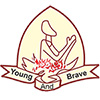Eucharist
What is the Eucharist?
The Eucharist is the source and summit of the Christian life. The term “Eucharist” originates from the Greek word eucharistia, meaning thanksgiving.
In the celebration of the Eucharist, bread and wine become the Body and Blood of Jesus Christ through the power of the Holy Spirit and the instrumentality of the priest. The whole Christ is truly present -- body, blood, soul, and divinity -- under the appearances of bread and wine, the glorified Christ who rose from the dead. This is what the Church means when she speaks of the "Real Presence" of Christ in the Eucharist.
Where is the Eucharist mentioned in the Bible?
The Lord Jesus, on the night before he suffered on the cross, shared one last meal with his disciples. During this meal our Savior instituted the sacrament of his Body and Blood. He did this in order to perpetuate the sacrifice of the Cross throughout the ages and to entrust to the Church a memorial of his death and resurrection. The Institution of the Eucharist is written down in the four Gospels below:
- Matthew 26:26-30
- Mark 14:22-26
- Luke 22:14-20
- John 6:22-59 (The Bread of Life Discourse)
Amen, amen, I say to you, unless you eat the flesh of the Son of Man and drink his blood, you do not have life within you. Whoever eats my flesh and drinks my blood has eternal life, and I will raise him on the last day. For my flesh is true food, and my blood is true drink. . . . Just as the living Father sent me and I have life because of the Father, so also the one who feeds on me will have life because of me. (Jn 6:53-57)
Why does Jesus give himself to us as food and drink?
Jesus gives himself to us in the Eucharist as spiritual nourishment because he loves us. By eating the Body and drinking the Blood of Christ in the Eucharist, we become united to the person of Christ through his humanity. "Whoever eats my flesh and drinks my blood remains in me and I in him" (Jn 6:56). In being united to the humanity of Christ, we are at the same time united to his divinity. Our mortal and corruptible natures are transformed by being joined to the source of life.
Is the Eucharist a symbol?
The transformed bread and wine are truly the Body and Blood of Christ and are not merely symbols. When Christ said “This is my body” and “This is my blood,” the bread and wine are transubstantiated. Though the bread and wine appear the same to our human faculties, they are actually the real body and blood of Jesus.
The Liturgy of the Eucharist
The Liturgy of the Eucharist begins with the preparation of the gifts and the altar. As the ministers prepare the altar, representatives of the people bring forward the bread and wine that will become the Body and Blood of Christ. The celebrant blesses and praises God for these gifts and places them on the altar, the place of the Eucharistic sacrifice. In addition to the bread and wine, monetary gifts for the support of the Church and the care of the poor may be brought forward. The Prayer over the Offerings concludes this preparation and disposes all for the Eucharistic Prayer.
The Eucharistic Prayer
The Eucharistic Prayer is the heart of the Liturgy of the Eucharist. In this prayer, the celebrant acts in the person of Christ as head of his body, the Church. He gathers not only the bread and the wine, but the substance of our lives and joins them to Christ's perfect sacrifice, offering them to the Father.
The introductory dialogue establishes that this prayer is the prayer of the baptized and ordained, is offered in the presence of God, and has thanksgiving as its central focus. Following this dialogue, the celebrant begins the Preface, which consists of four different Eucharistic Prayers. After these prayers, communion is then given.
The following timeline follows the traditional Liturgy of the Eucharist:
Prayer over the Offering
Eucharistic Prayer
Preface
Holy, Holy, Holy
First half of prayer, including Consecration
Mystery of Faith
Second half of prayer, ending with Doxology
The Lord's Prayer
Sign of Peace
Lamb of God
Communion
Prayer after Communion
Conclusion
By his Real Presence in the Eucharist Christ fulfils his promise to be with us "always, until the end of the age" (Mt 28:20). As St. Thomas Aquinas wrote, "It is the law of friendship that friends should live together. . . . Christ has not left us without his bodily presence in this our pilgrimage, but he joins us to himself in this sacrament in the reality of his body and blood" ( Summa Theologiae, III q. 75, a. 1).
With this gift of Christ's presence in our midst, the Church is truly blessed. As Jesus told his disciples, referring to his presence among them, "Amen, I say to you, many prophets and righteous people longed to see what you see but did not see it, and to hear what you hear but did not hear it" (Mt 13:17).
In the Eucharist the Church both receives the gift of Jesus Christ and gives grateful thanks to God for such a blessing. This thanksgiving is the only proper response, for through this gift of himself in the celebration of the Eucharist under the appearances of bread and wine Christ gives us the gift of eternal life.
The Sacraments of Initiation – Baptism, Confirmation, and the , Eucharist – are the foundation of the Christian life.
~from the United States Catholic Catechism for Adults | en español
